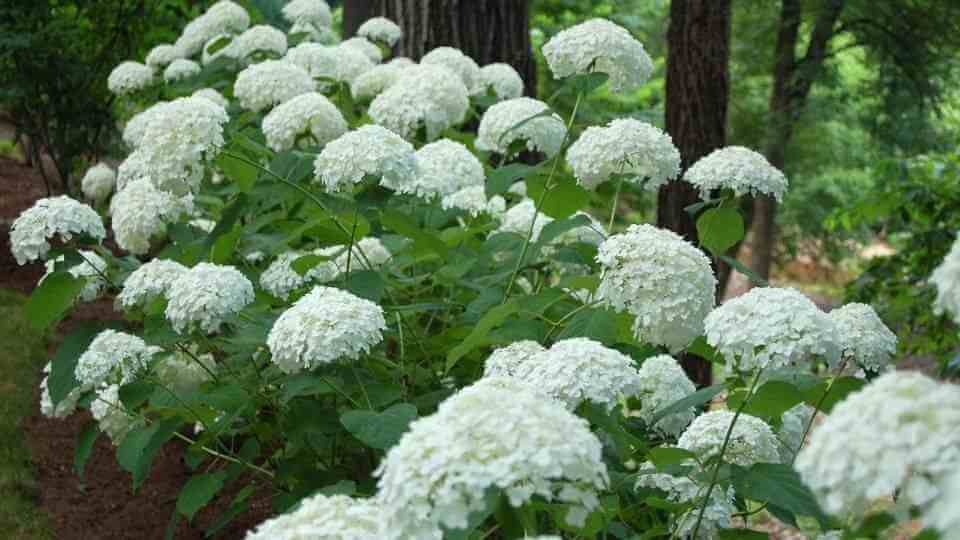Hydrangeas add to the beauty of gardens and are one of the most favorite flower plants of gardeners. Not confined to the blooming beauty, but hydrangeas are loved for their minimal care requirements. However, pruning is in high demand for shrubs!
The flowering plant has attractive foliage and bark. For large flaunting blossoms, you need to take care of a few significant things – proper sun and on-time pruning.
If you don’t see your hydrangeas blooming for a season, it is either failing to balance one of the above-mentioned conditions or an early frost damaged the buds.
In this blog, we have brought you crucial information on how to prune hydrangeas for a perfect bloom. The method relatively depends on the type of hydrangeas you have.

How to prune hydrangeas?
The initial stage of pruning hydrangeas is to understand the blooming season of the flowers based on which the pruning season and methods are divided into two different groups, such as:
- For the plants that bloom on old wood
- For the plants that bloom on new wood
These categories have various types of hydrangeas included which we will discuss individually in the blog.
How to prune hydrangeas that bloom on old wood?
Blooming on old wood means the hydrangeas that flower on last year’s growth. The ones that bloom on old wood grow flower buds on stalks (there for a year) in late summer.
These types of shrubs require just a little pruning. However, when you do it, it is essential to know when and what to prune. Remember, the more old wood you have, the fewer flowers will bloom next summer.
The pruning steps for old wood hydrangeas are:
- Soon after flowering (don’t postpone it to July or later), cut back the flowering stems to a pair of healthy buds.
- In early spring or late winter, prune the damaged or weak stems.
- Remove 1/3 (not more) of the old stalks, bringing them to the ground level. Start by pruning the oldest ones.
- Carry out this process each summer to keep your shrubs fresh and new, keeping them in shape.
The types of hydrangeas that bloom on last year’s growth are the bigleaf, oakleaf, mountain and climbing varieties.
Bigleaf Hydrangeas
Hydrangea macrophylla or bigleaf hydrangeas are the flowers that change color from blue to pink as the pH of the soil turns from acidic to alkaline. There are a few varieties that remain white till they shed off.
The leaves of bigleaf hydrangea are glossy, dark green and coarsely serrated. The plants set their flower buds during the period of late summer-early fall. So, it is best to prune in late fall or spring.
You can trim the spent flowers as they dry and fade to make sure your shrub looks tidy. When you notice most flowers fading away, know its pruning time! We would suggest pruning the weaker and dead stems selectively (old and new) with bypass pruners.
For gardeners who live in colder regions, it is advised to tie the branches together and wrap them using a burlap will encourage the plant to live through winter. As the buds start to swell, remove the burlap.
Note: Don’t prune all of the old wood stalks because that’s what makes the plant continue flowering in the new growth reaches maturity.
Oakleaf Hydrangeas
Also called Hydrangea Quercifolia, this variety is easily recognizable from its attractive oakleaf-shaped foliage. As the foliage remains the main attraction of these hydrangeas, the losing bloom is a sight, less disappointing than other varieties of the shrub.
H. quercifolia should be pruned right after it completes flowering. If your hydrangeas have undergone winter dieback, prune them back to the point of damage.
Mountain Hydrangeas
With a botanical name of Hydrangea Serrata, mountain hydrangeas are tiny flowering shrubs boasting pointed and narrow leaves.
The flower heads of these hydrangea varieties are flattened, and its similarity in appearance with Hydrangea macrophylla creates confusion at times.
Despite some similarity, H. Serrata doesn’t have large leaves like Hydrangea macrophylla. The shrub blooms on old wood and, so the pruning requirements are minimal.
You can simply cut the flowering stems back to a pair of (healthy) flower buds. During early spring, you should prune back the injured/dead stems to ground level.
Climbing Hydrangeas
These are a stunning variety of hydrangeas that blooms on wood. Also popular by H. Anomala Petiolaris, these gradually grow to find the support of a tree to grow into vines. It is not a shrub like other varieties of hydrangeas.
Climbing hydrangeas demand no or little pruning after establishment. They grow faster and need late winter pruning at times to set fine boundaries for the next season.
You can cut back the overgrown vines to ground level to keep the plant fresh and rejuvenated in early spring.
How to prune hydrangeas that bloom on new wood?
Hydrangeas blooming on new wood are the varieties that set the flowering buds on the ongoing season (on new growth). As the flowers bloom on new growth, you can prune these any time of the year, leaving summer.
Go by the following steps to prune hydrangeas that bloom on new wood:
- Cut off the faded blooms in late summer to get it into good shape and appearance.
- For enhanced vigor, prune away the oldest canes first.
- In late winter, cut back the shrub completely before new growth shows up.
Note: As additional tips, try leaving some of the older branches as a base for new growth. Many home gardeners go by cutting the shrubs back to the ground for larger flowers next blooming season.
The hydrangeas variety that blooms on new wood includes smooth hydrangeas and panicle hydrangeas.
Smooth Hydrangeas
Also known by the well-known cultivar, Hydrangea Arborescens, smooth hydrangeas don’t face typical blooming issues. However, the white flowers are not very attractive as expected of hydrangeas normally.
Smooth hydrangeas are shrubs that bloom on new wood, so you can prune them in early spring to make sure lot of flowers bloom the next season. These are round shrubs having almost rounded leaves with pointed tips.
The leaves are paler on the inside as compared to the top. While pruning, cut off the injured/damaged branches over the winter and keep trimming the leaves to keep it in good shape.

Peegee Hydrangea
Popular by the name Panicle hydrangeas or Hydrangea Paniculata ‘Grandiflora’, peegees are large snowball-shaped clusters of flowers that bloom in mid-to-late summer.
The flower clusters bloom in white colors and gradually takes the pink color. They remain on the plant dried even after the leaves fall off. The flower buds on panicle hydrangeas show up during the new growth in spring.
If you have got these in your garden, light pruning of the stems in early spring or late winter will keep the shrub from overgrowth. It will also promote healthy growth and bloom.
During the growth season, you should deadhead hydrangeas as required. Keep shaping up the plant as and when the flowers start shedding or turning unattractive.
Planting and watering tips for hydrangeas
- Hydrangeas can be planted throughout the year, except during chilling winters. So if your ground is frozen, avoid planting hydrangeas.
- You should plant the shrub in the same soil depth as in the nursery pot.
- Don’t forget to check the guidelines on the tag for proper spacing between the plants.
- Some hydrangeas variety grow into larger shrubs, whereas some are best grown compact in containers.
- Not just pruning hydrangeas, but watering them is also an essential caring tip for gardeners.
- Water the plant every day during summers, as required.
- If the soil turns dry, it may affect the plant’s growth.
- For wilting hydrangeas, it is best to soak it well.
Deadheading hydrangeas
Deadheading is a process of removing the old or dead blooms of a plant. You can deadhead hydrangeas anytime without affecting the new growth’s bloom. The most suitable months for deadheading hydrangeas are June and July.
Here’s how you can do it:
- When cutting in June or July, remove the long stems as the flower buds for next year has not yet set.
- When deadheading after August, you can safely remove the short stems without affecting the growing bloom buds for the upcoming season.
- Cutting the large leaves are always fine with the blooms.
In a Nutshell
Hydrangeas are low-maintenance flowering plants that only seek good pruning and watering needs, not extraordinary though. So, if you have got a shrub at home or planning to grow a flower cluster soon, this guide on how to prune hydrangeas would be of great help.
You may also like to read
Growing Marigolds: Know the Various Types and Everything Significant






